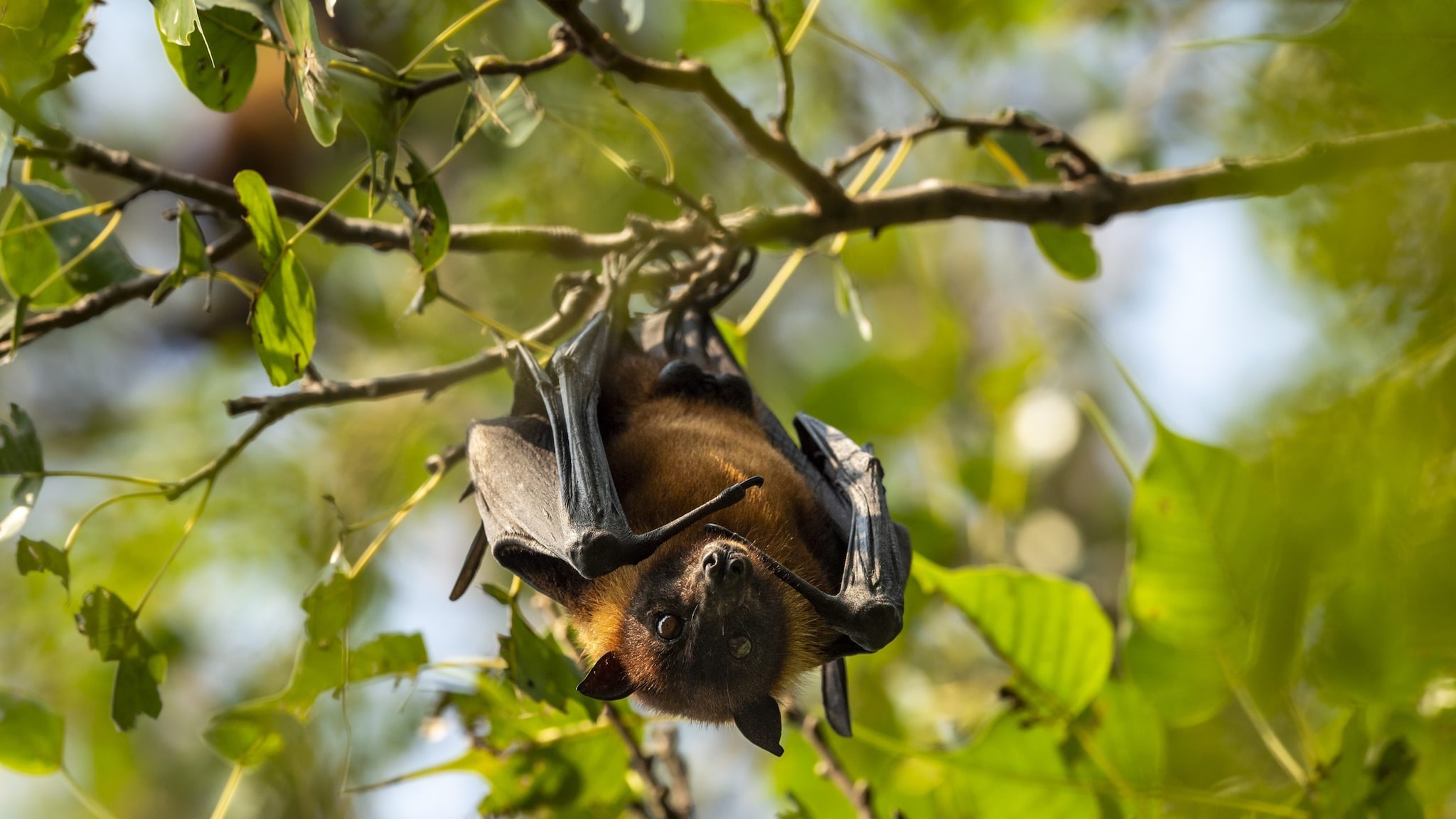Key points
- Nipah virus is a dangerous virus carried by the fruit bat.
- Outbreaks of Nipah happen in people yearly in Asia, usually Bangladesh and India.
- Around 40%–75% of people with Nipah die.

Etiology
Nipah is a zoonotic virus and a member of the family Paramyxoviridae, genus Henipavirus. The fruit bat (genus Pteropus) can carry the virus and transmit it to people or other animals, such as pigs. This bat can be found throughout Southeast Asia, the South Pacific, and Australia region. People can become infected if they have close contact with an infected animal or its body fluids. Once it spreads to people, person-to-person transmission of Nipah can occur.
Exposure risks
People with an increased risk for Nipah include:
- People who work closely with infected pigs
- Families and caregivers of people with Nipah
- Healthcare workers caring patients with Nipah
- People exposed to food or drinks that were soiled by infected animals
- People who climb trees where infected bats often roost
Incubation period
Symptoms typically appear in 4-14 days following exposure to the virus.
Some infections have been reported months and even years after exposure. These are known as dormant or latent infections.
Signs and symptoms
Infection with Nipah virus can cause mild to severe disease, including encephalitis and potentially death.
People with Nipah are usually sick for 3-14 days with fever, headache, cough, sore throat, and difficulty breathing. Later in the course of infection, the patient may get sicker and experience encephalitis. This condition may progress to coma within 24-48 hours.
Initial symptoms may include:
- Fever
- Headache
- Cough
- Sore throat
- Difficulty breathing
- Vomiting
Severe symptoms caused by encephalitis may follow:
- Disorientation, drowsiness, or confusion
- Seizures
- Coma
Prevention
If Nipah is suspected and the patient is clinically stable:
Healthcare providers should wear gown, gloves, eye protection, and a N95 respirator or higher.
If Nipah is suspected and the patient is clinically unstable OR Nipah is confirmed:
Healthcare providers should use personal protective equipment according to clinically unstable VHF guidance.
Preventing Nipah infection
Testing and diagnosis
Early diagnosis of Nipah infection can be challenging due to its non-specific early symptoms. However, early detection is critical to improve chance of survival, prevent transmission, and contain an outbreak. Nipah should be considered for people with relevant symptoms who have been in areas where the virus is endemic.
Nipah infection can be diagnosed during illness or after recovery. During early stages of infection, test for Nipah using real time polymerase chain reaction (RT-PCR) from throat and nasal swabs, cerebrospinal fluid, urine, or blood. Later in the course of illness and after recovery, test for antibodies using an enzyme-linked immunosorbent assay (ELISA).
Treatment and recovery
Currently there are no licensed treatments available for Nipah. Treatment is limited to supportive care, including rest, hydration, and treatment of symptoms.
While there is no licensed treatment, there are several treatment options in development:
- m102.4, an immunotherapeutic treatment, has completed phase 1 clinical trials.
- m102.4 has been used on a compassionate use basis.
- The drug remdesivir has helped prevent Nipah when given to exposed nonhuman primates.
- Remdesivir may complement immunotherapeutic treatments like m102.4.
- Ribavirin was used to treat a small number of patients in the 1999 Malaysian Nipah outbreak, but its efficacy is unclear.
